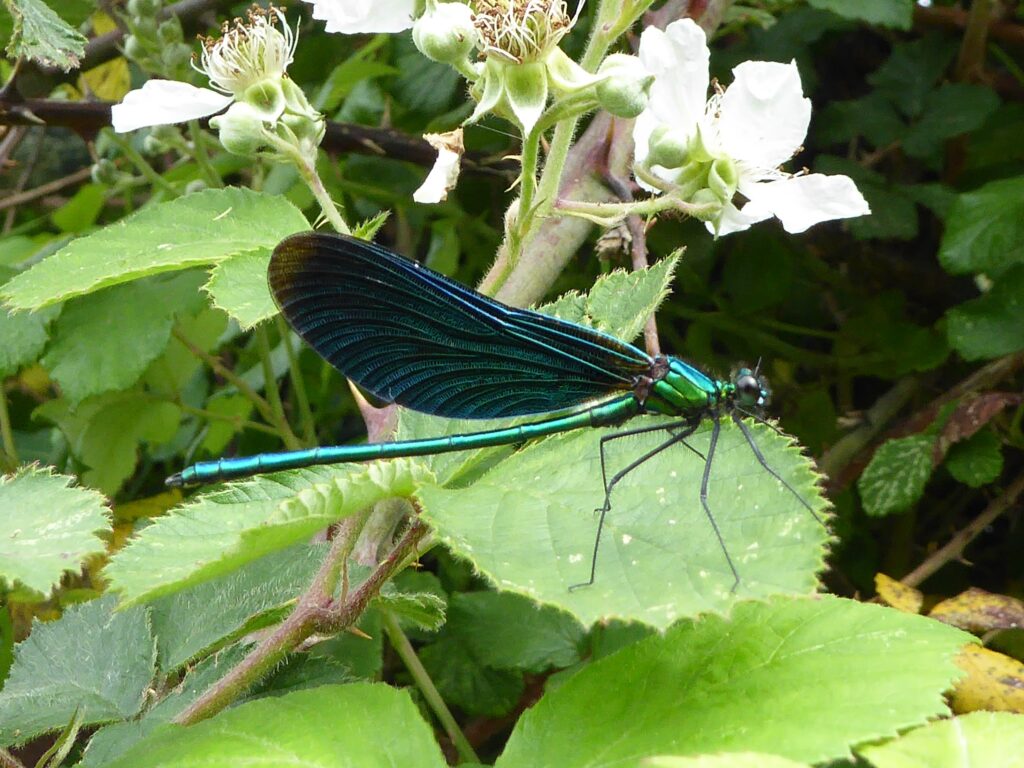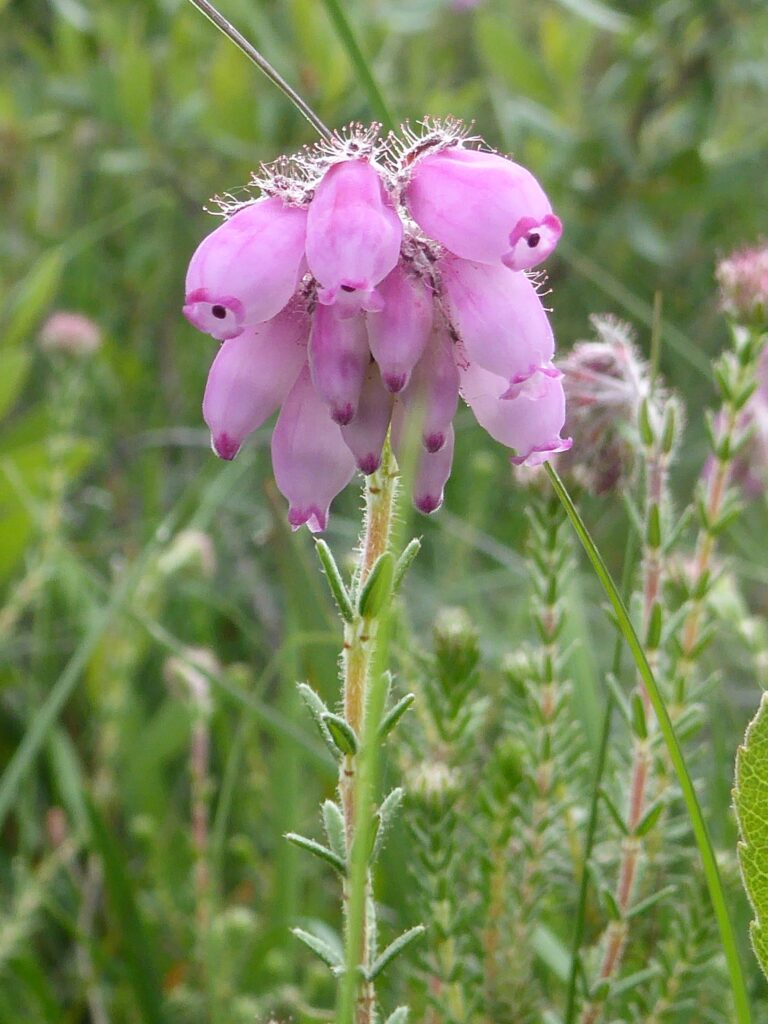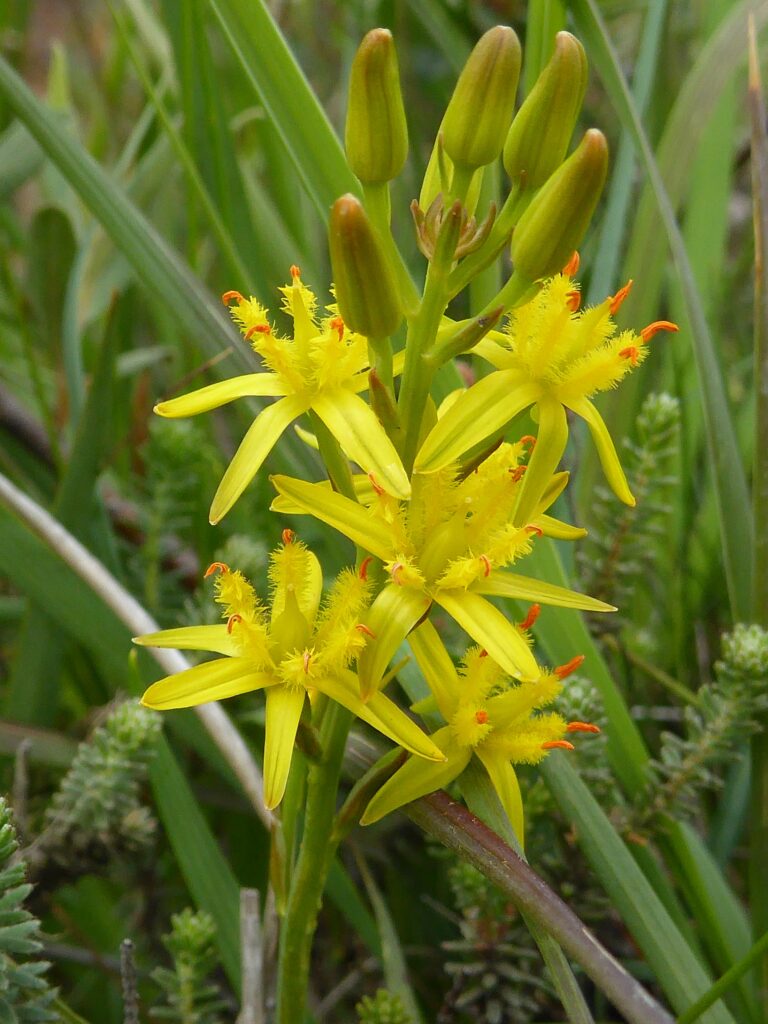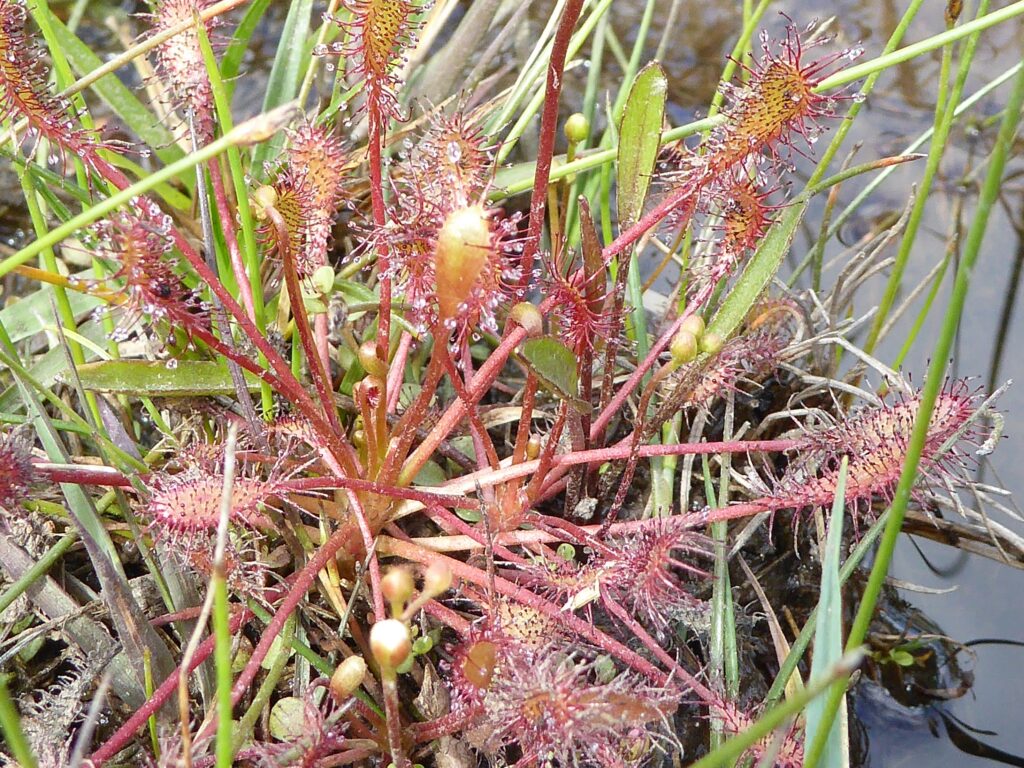
During July and August, I’m always keen for any opportunity to explore my favourite part of the New Forest – its valley mires and streams. The sound of gently gurgling brooks, the pungent aroma of bog myrtle and the flashing neon colours of darting damselflies quickly awakens my senses and curiosity. There’s always something new to discover and observe, and with some of the largest tracts of lowland acid heath and valley mire in western Europe, they are extremely special habitats to explore. Here are some of my top ‘not-to-miss’ tips to get you started.
Reading the landscape is the key to understanding heathlands, and in particular, knowing your different heather species. Heather is an evergreen plant which flowers from July to August that suddenly transforms the ‘heathscape’ from shabby shades of brown and silvery grey to a spectacular purple haze. Walkers, wanting to keep their feet dry, usually follow tracts of ling heather (Calluna vulgaris) and especially bell heather (Erica cinerea) – its distinctive dark purple-pink bell-shaped flowers form clusters up the stem – which grows on the drier heath. Whilst cross-leaved heath (Erica tetalix) thrives on wet and boggy/mire areas. It has pink bell-shaped flowers clustered at the end of long branched stems and its thin leaves sit in whorls of four, so when looked at from above look like a cross. So, remember X marks the spot of wet ground!

To locate the mires and streams you also need to scan across the heathland to look for green bands of willow and alder carr which are made up of trees that thrive on wet and waterlogged soils, and commonly grow alongside the banks of streams. The white pom-pom heads of cotton grass, rushes and bog myrtle (Myrica gale) with the occasional bright yellow splash of flowering bog asphodel soon indicates that you need to tread carefully. It’s safest and less damaging to the mire habitats to walk alongside the streambanks and keep to higher drier ground around the edge of the mires. I always follow the paths made by ponies which reduces disturbance to ground nesting birds and follow the New Forest code.

I don’t often wander far and enjoy finding a comfortable spot to sit alongside a stream and simply observe. Look out and listen for dragonflies to hear the beating of their delicate but strong wings as they skim past, or the ariel clashes as they chase intruders out of their territory. They are very inquisitive and will often check you out, and sometimes if you’re lucky will land on a small stick held out steadily for a close-up view. There are 28 species of dragonfly that regularly breed in the New Forest. The southern hawker, emperor and broad-bodied chaser are some of the large and unmistakable dragonflies whilst the small, slender damselflies flutter quietly and rest characteristically with wings folded back over their body. Look out for both the beautiful and banded demoiselle with their metallic blue or green body, together with red and blue/black banded damselflies which create a wonderful kaleidoscope of colours.
See if you can spot the round-leaved sundew, a carnivorous plant, that grows in these boggy areas. Its greeny-red leaves are covered in hairs tipped with glistening sticky droplets that look like early morning dew but entrap small insects. They are then slowly digested and absorbed into the leaf, an amazing adaptation to obtain nutrients lacking in the acidic soils.

Maybe, whilst pondering about how many insects a sundew can catch, the rhythmic buzzing of the bumble and honeybee visiting heather flowers, together with the skylark singing above in the clear blue sky and the insistent but charming call of the stonechat perched on a nearby gorse bush, will soon lull you into a restful trance – you’ve now experienced the enchantment of the Forest’s meandering brooks and magical mires.
Note, if you’re still pondering – I’ve read that the small-leaved sundew can catch as many as 2,000 insects during the summer – see if you can spot, on their unfurled leaves, the husks of discarded insect bodies!
Safe exploring.
